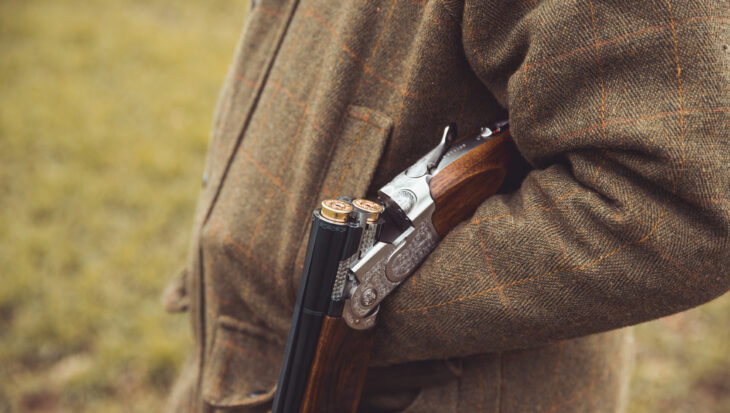Ban on the use of lead shot – finally!
Posted 10 Jul 2025

Posted on the 23rd February 2009
Racing’s regulatory body, the British Horseracing Authority (BHA), has written to all signatories of the Early Day Motion (EDM) – tabled by Mike Hancock MP.
EDM 285 calls for government action on: the overproduction of race horses; their destruction in slaughterhouses and in racing yards; and also for measures to address the ‘alarming’ number of horses killed on racecourses.
The BHA’s briefing attempts to minimise the problems that it should be remedying. Below, we address the main shortcomings of its arguments.
A key point to consider is the shocking admission by Tim Morris, the BHA’s Director of Equine Science and Welfare and author of the MPs’ briefing, that only during the last seven months has the BHA started to ‘try to understand the numbers going into racing, travelling through racing and coming out of racing’ (Feb 2009 Thoroughbred Owner and Breeder magazine).
Although the BHA emphasises the distinction between the British and Irish racing scenes, the two industries are closely linked and interdependent.
The BHA briefing says that around 16,500 Thoroughbreds* are produced each year by the British/Irish industries – and that just 7,500 of this total actually enter training (preparatory to racing). The briefing, however, fails to specify what happens to the remaining 9,000 horses. This could be because many are slaughtered or shot in their yards.
(*In fact, the most recent figures published by Weatherbys shows that 5,839 foals were born in Britain in 2007 and 12,633 were born in Ireland, totalling 18,472.)
The BHA briefing reproduces a pie chart that purports to account for horses who leave British racing (the same number – 7,500 – leave racing annually as enter it). The chart conspicuously omits figures and percentages, so we must draw our conclusions based on apparent proportions. The chart suggests that more than 40 per cent of the horses who exited racing in 2006 are now dead or have met an unknown fate. (This percentage is arrived at by adding together the categories labelled ‘unknown’, ‘reported dead’, sold at auctions and ‘exported’.)
This dismal state of affairs is supported by comments made by Tim Morris in the above-mentioned Thoroughbred Owner and Breeder interview. Morris pointed to the 7,500 horses who leave racing annually but could not say what happened to between 3,500 and 4,000 of that total.
Animal Aid contends that around 2,000 race horses are slaughtered every year. In a recent Daily Mail article, the BHA came close to acknowledging this figure when it told the reporter that, in 2008, 1,200 were killed in abattoirs, while a further unspecified number were killed in Irish slaughterhouses. (Daily Mail Jan 31, 2009). The MPs’ briefing paints a similar picture. It says that, in January 2009, a total of 83 race horses were killed in British abattoirs. Multiply this figure by 12 and you arrive at an annual total of around 1,000 horses. Later in the briefing, the BHA estimates that a further 800 Thoroughbreds are slaughtered – animals who have never raced and are often former ‘breeding stock’. The total for these two categories, as can be seen, is not far short of 2,000.
In addition to those horses slaughtered in abattoirs is the unknown total who are shot in racing yards and, not infrequently are fed to packs of hounds belonging to hunts. This could account for a large number of horses, given that there are still more than 300 hunts around the country.
This is another of the areas that Animal Aid has intensively researched for more than a decade. We calculate that, currently, around 420 horses die on courses or in training every year. The on-course total is tabulated via a database, Race Horse Deathwatch (see http://www.horsedeathwatch.com/), that we established in March 2007. The total number of dead horses recorded during the first year was 167. And we estimate that more than 250 horses die in training.
The BHA has never wanted to publish straightforward numbers of horses killed. Instead, it prefers to shelter behind complicated and misleading percentages. It’s a system under which horses are not counted as individuals but by the number of times that they run. Thus, if a horse dies on his or her tenth run of the season, it is recorded as one death for every 10 runners. The BHA plays this trick with its chart on page 2.
Despite the claim in the briefing that, ‘we’ve reduced injuries and fatalities’, the BHA chart shows that death rates over the past three years were higher than in 2005.
This is dealt with in the briefing in the second very brief paragraph of page 2. The issue relates to a new BHA fixtures list, which will remove racing opportunities from around 800 of the lowest rated horses, because they generate negligible betting and associated income. Animal Aid’s concern is that, with earning potential stripped from them, the welfare of these horses is at serious risk. The BHA briefing says that these lower-ranked horses will be gradually removed from racing and, thereby, horse welfare problems will be avoided. The reality is that horses are rated relative to each other, and not in absolute performance terms. Therefore, under the new fixtures system, there will continue be lower ranked horses, ineligible to compete under the BHA’s rules.
Posted 10 Jul 2025

Temperatures are rising and it’s time to get outdoors, enjoy the weather and tuck into some delicious vegan food! Thanks to an abundance of plant-based options now available, there’s an alfresco option for every tastebud...
Posted 09 Jul 2025
